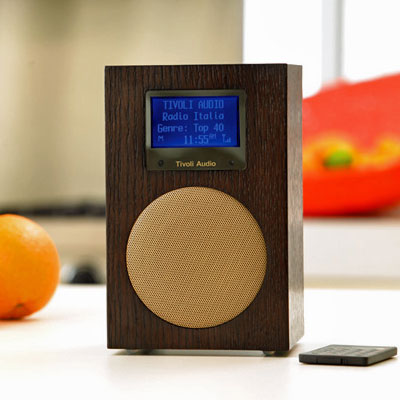One time, at podcamp, somebody stood up and talked about how her business – an art gallery – had invited local art bloggers over one night for a gallery tour and general chat, and about how this had been a wildly successful PR and community-building exercise. If any gallerists are reading, I suggest you take note. And if any expensive restaurants or clothing stores would like to try this, please do get in touch with me right away.
Yesterday, I got just such an invitation from one of my favorite institutions, WBUR-FM, an NPR station that is more or less permanently tuned on my home and car radios. The good people of WBUR have had the foresight to invest in new media initiatives, including the excellent blog, The ConverStation, ably helmed by Ken George, to which I referred earlier.
Ken invited local bloggers and social media types through facebook, twitter, and maybe even personal invitations, and despite biblical weather, about 15-20 people showed up for a tour of the station, networking, chatting and eventually, eating and drinking. See the WBUR socials flickr group for some not very incriminating photos.

What the heck is that, you ask? It’s a beautiful wooden sound baffle, on the wall of the engineering room next to one of the air studios at BUR. Reminds me of old type-sorting cases. I totally want one. You can see it with more context in the background of some of the flickr pics. Each box is few inches across and has a different depth, turning it into an acoustic black hole, especially at the lower frequencies. Bass checks in, but it doesn’t check out.
Unfortunately, this might be a metaphor for the future of public radio in a digital, on-demand world. Here are some thoughts from the free-wheeling discussion after the tour. I’m sure a lot more was batted around at the bar after, but I had to cut out early for dinner.
Everybody agreed that we all love NPR programming, and eveybody agreed that we all hate pledge time. Some even hate underwriting announcements, and they’re about as painless as ads can be. I learned that NPR underwriting messages cannot include any call to action or any mention of competition or offers. Sadly, this helps confirm why as a marketer, I consider underwriting to be a donation that makes the executives feel good, not a marketing program that drives business.
So what does a roomful of smart social media types say about this? Some suggested that they’d be happy to pay for an ad-free (no underwriting, no pledge driving) audio stream or podcast on a subscription basis. I’ll leave the logistics of pay per podcast – and what to put in the stream gaps left by excluding the pledge drives – to the techies. This hints at the basic problem the old commercial (or pledge) system has: you can’t fast-forward TV or radio, but you sure can fast-forward a podcast. Actually, with TiVo and the like, you can fast-forward TV, and I think there’s something similar for radio.
The next idea that circulated was wondering if people would pay for individual programs by subscription, or individual episodes on demand. This led to discussion of whether public radio looks at how much pledge money comes in from different shows (they do) and whether the pledge-per-show model might let some shows float themselves and others that can’t pay their bills just dry up and die.
I opined that the very premise of public radio was that some kinds of programming could not support themselves in the market, but had such redeeming qualities that it was in the national interest to subsidize them. The elitist and paternalistic nature of public radio is at odds with the both tough-love capitalism and the populism (Diggocracy?) of the internets. Ouch. I guess we really are all batch of quiche-eating prius drivers.
I bet that lots of public radio shows could be commercially viable: Car Talk, Prairie Home Companion, and even This American Life come to mind. (Not all examples are WBUR shows, and NPR syndication is a bit piece of the puzzle here that I’m going to skip for brevity) But what about the stuff that they are essentially subsidizing, Con Salsa, RadioLab, and most of the news? On the one hand, the low, low price of internet distribution could put some of those shows back in the black if they could avoid sharing the big fixed costs of terrestrial radio production and distribution. But on the other hand, dropping those shows from the air would likely make them even even less able to raise money, especially if the station cut them off from a share of the pledge pie.
I’m usually all about free marketeering, but for the small slice of my taxes that goes to support cultural stuff, I’m pretty happy to subsidize and then to pay again on top of that. I hope Ken and the WBUR crew can find their way in this brave new world.
Speaking of free and not so free markets, if you have any disposable income left after tithing to public radio, you might look into the latest in expensive wooden radios, the Tivoli Audio NetWorks internet radio, available in cherry, walnut and wenge, pictured below. (Wikipedia says its endangered, Tivoli says sustainably harvested, go figure)
You may recall that I have a thing for wooden radios, and I periodically check in on what’s new in tree-based audio products. I’ve been critical of Tivoli for getting things painfully almost right in the past, and I think this is another one of those. But the release to market of a $600 internet-only (FM radio costs you an additional $50) audio device has got to mean something to the discussion above. Tivoli is pitching hard on the angle that you don’t need a computer to use this thing to listen to hundreds of radio stations from all around the world, you just need an internet connection. If there’s a place where lots of people have high-speed internet but no computer, I must have missed it. Maybe they just mean you could put this radio in a room where you don’t have a computer, like your bathroom. If you need a $600 internet radio in your bathroom, you need more fiber in your diet.
I haven’t seen or heard or touched this device, but I’m going to tell you what I think anyway since I’ve seen and heard and touched many other Tivoli products.
It’s gorgeous – from the waist down. The geometry of the box and the speaker and their colors and materials look great. I love the wenge especially. I recognize that it probably needs a digital display, but couldn’t they come up with something less ugly? I would think that a color screen wouldn’t be hard to pull off at this price point. And maybe you don’t need those two rivets on the display frame? Ick. The credit-card remote looks like it has those awful blister buttons, too. There’s a button or knob on the top of the unit that might – just might – approach the joy of the geared-down knob on the Model One, but sadly, I doubt it.
It’s expensive – I’ve mentioned this a few times and I’m still a bit in shock. For $600 you get a mono internet radio. Other internet radios cost half that. If you already have a computer, you can get speakers for even less. And you have to add $50 more for FM and another $100 for a second speaker for stereo sound. I can’t tell if the second speaker is connected by cable or wireless. Conspicuously absent, an ipod dock. Clearly, this is a premium product, so I say, just take the whole kaboodle up to $800 or $1000 and don’t nickel and dime your premium customers.
It probably sounds great – I really don’t know, but the reviewers seem to like it, and it has some spiffy buffering technology that might reduce the chop of a lousy internet stream. The wooden case bodes well, too.
It’ll be interesting to see how this product goes for Tivoli. If they’re right, there are some people willing to pony up big bucks to get good looks and good sound with internet radio. If they’re wrong, the XM-Sirius monster might eat their lunch, or the internet radio generation will just pass them by. That would be a shame, I think the world needs more and better wooden cases for its electronics.


NPR used to have its premium shows sold through audible.com from 1999-2005 when they dropped the contract because it got in the way of them podcasting anything else. For a year it cost you over $100. I don’t remember the pricing scheme exactly, but I found this:
It’s also possible to make a homebrew podcast of any streaming content you want, either by using a program like Replay Radio or by finding a station that broadcasts in mp3 streams and setting up a scheduled task that runs a shareware program like streamripper to record it as you want. Both of those solutions involve recording in real time though, so I don’t think either one was a serious threat to audible, despite the prices that audible charged. This device does something similar, except that it records radio off the air and stores it as an mp3. And radio shark is a radio tivo device that allows you to skip the internet and a computer altogether.
I think they mean it for kitchens, living rooms, and bedrooms, especially for people who only have laptops and don’t want to listen to music through laptop speakers. That said, it’s overpriced for a kitchen and underfeatured for a living room.
I’d like an internet radio because my local radio coverage is poor, but that’s a ridiculous price for what’s essentially a shortwave.
David:
Thank for your cogent analysis and the generous mention. And of course for joining us last Wednesday night despite the “biblical weather.”
Hope to see you at future social media events here at 90.9.
As your insights and clever use of metaphor exceed my poor expository powers, I have taken to directing folks to your blog for a recap of the Tweet-Up’s conversational themes. Expect at least one visitor from the Frozen North.
Good points about the subsidy. And yes, show-specific pledging would, in all likelihood, mean the death of some shows, though labors of love like Con Salsa are better positioned to survive — at least in the interim.
It is the expensive public radio gems that would be looking over their shoulders.
In Con Salsa’s small (for broadcasting), but passionate following and relatively cheap production costs are parallels to podcasting, blogging and other citizen-generated media.
And citizen-generated media in all its exuberant chaos, creative energy and risk-taking also invites analogies to public broadcasting before its institutional arteries hardened. Public broadcasters would do well to bottle that tonic and take a good, long swig.
I guess this my long-winded way of saying that while the web is a tower killer, it’s also represents fertile soil for grassroots media creators like yourself to invent new forms of public media that may hew closer to the original vision. Though I will confess to a craven practical interest in keeping the towers up a few more years at least. At least until we public broadcasting and public media folk roll up our sleeves and forge a new model. Let’s get busy building the future!
Great work on the blog, though it tends to make me ravenously hungry!
Love the photograph of the “bafflers” (so that is what they are).
Now to get me one of those sweet-looking radios.
Thanks again for your analysis and attendance.